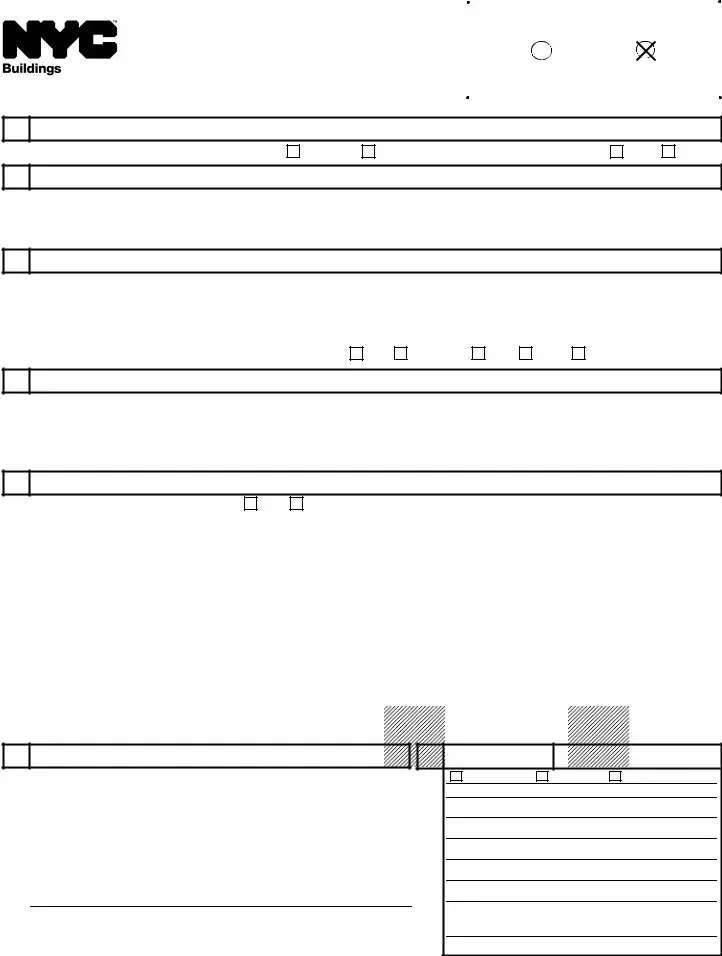The NYC PW5 form, used for After Hours Work Permit Applications, shares similarities with various other regulatory and permitting documents. Each of these documents serves a specific purpose within the broad spectrum of regulatory compliance, project management, and legal operations in different fields. This overview explores how the PW5 form aligns with other forms in terms of their purposes, structures, and requirements.
The Building Permit Application, used for requesting permission to start a construction project, is quite similar to the PW5 form. Both require detailed information about the location, contractor, and specific details of the proposed work. The main difference lies in the desired outcome: the Building Permit Application is broader, covering all hours, while the PW5 specifically addresses after-hours work.
The DOB Electrical Permit Application also shares parallels with the PW5. It focuses on the electrical aspects of a construction project, necessitating detailed information about the electrical contractor and the scope of electrical work. Like the PW5, it emphasizes safety and regulatory compliance, though it is specific to electrical work.
The Variance Application is another document with a common goal. This application seeks permission for deviation from the standard zoning or building codes, similar to how the PW5 requests a variance for work hours. Both necessitate a justification for the request and details about the project, signifying their role in managing exceptions to standard regulations.
A Sidewalk Repair Permit, required for work affecting city sidewalks, echoes the PW5's function in urban infrastructure projects. It mandates details about the location and nature of the repair work, ensuring that such actions comply with city standards and do not unduly disrupt public spaces or safety.
The Certificate of Occupancy Application, although distinct in purpose, shares a procedural similarity with the PW5. It seeks to certify a building's compliance with building codes and its suitability for occupancy, requiring detailed submission of relevant information and adherence to code, much like the PW5's approach to after-hours work regulation.
The Land Use Application, used in zoning and land development processes, also resembles the PW5 form by requiring comprehensive information on the project, its impact on the surrounding area, and compliance with local land use regulations. It caters to ensuring that all developments fit within a city’s planning framework.
The Environmental Assessment Form is another pertinent comparison. It is essential for projects likely to have an environmental impact, requiring a detailed account of the project and its potential effects. Like the PW5, it plays a critical role in regulatory compliance, though with a focus on environmental protection.
The Liquor License Application, fundamentally different in sector and purpose, similarly demands exhaustive details about the business, its owners, and its operation specifics. It exemplifies regulatory compliance and public safety concern, paralleling the PW5’s intention in the construction domain.
Lastly, the Special Event Permit Application, required for planning public events, aligns with the PW5 form in its intent to mitigate impacts on the public and ensure safety and compliance with city codes during non-standard operations. Both demonstrate the balance between enabling activities and maintaining public order and safety.
In essence, while the NYC PW5 form is expressly for after-hours construction work permits, its structure, intent, and requirements resonate across various forms and applications designed to ensure regulatory compliance, public safety, and appropriate use of spaces within different contexts.

